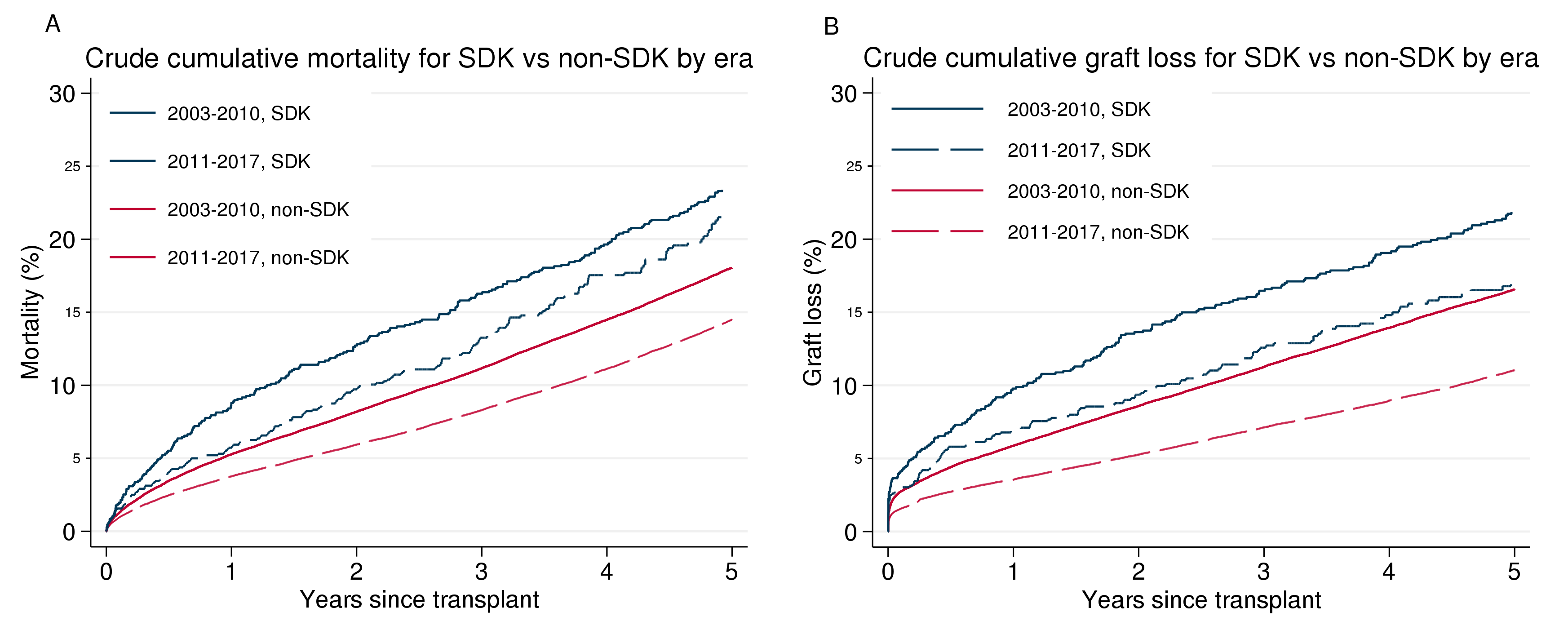Temporal Trends in Utilization and Outcomes of Sclerotic Donor Kidneys in the United States
Johns Hopkins University, Baltimore, MD
Meeting: 2020 American Transplant Congress
Abstract number: 337
Keywords: Biopsy, Donors, marginal, Kidney transplantation, Outcome
Session Information
Session Name: Kidney Deceased Donor Selection II
Session Type: Oral Abstract Session
Date: Saturday, May 30, 2020
Session Time: 3:15pm-4:45pm
 Presentation Time: 3:51pm-4:03pm
Presentation Time: 3:51pm-4:03pm
Location: Virtual
*Purpose: Sclerotic donor kidneys (SDK, glomerulosclerosis ≥20% on biopsy) represent a possible expansion to the donor pool but are often discarded due to historical association with poor post-transplant outcomes. Given changes in organ allocation policy, clinical practice, and donor/recipient characteristics over time, we wanted to characterize temporal trends in the utilization and outcomes of SDKs.
*Methods: We used national registry data from SRTR to study 10,084 adult SDKs from 2003-2017. To quantify temporal trends in discard rates of SDKs, we used multi-level logistic regression, accounting for donor and recipient characteristics and OPO-level variation. We then used adjusted Cox regression to characterize temporal trends in post-transplant mortality and death-censored graft loss for recipients of SDK grafts.
*Results: Of the 10,084 SDKs recovered, 20.1% were used for transplant, 79.9% while were discarded. After accounting for donor factors and OPO-level variation, SDKs were more likely to be discarded compared to non-SDKs, and this difference increased over time (adjusted odds ratio [aOR] in 2003-2006: 6.517.308.18; 2007-2010: 6.737.478.30; 2011-2014: 9.8510.9812.25; 2014-2017: 9.6310.7411.99). This translated to 70.5% of SDKs being discarded in 2003 compared to 83.1% in 2017 (p<0.001). However, only 2.6% of the variation in discard was attributable to differences between OPOs. In contrast to the increasing likelihood of SDK discard over time, post-transplant outcomes of SDK recipients improved over time. Compared to SDK recipients from 2003-2010, SDK recipients from 2011-2017 had a 22% decreased risk of mortality (adjusted hazard ratio [aHR]: 0.660.780.93, p=0.006) and a 20% decreased risk of graft loss (aHR: 0.650.800.99, p=0.04) (Figure 1). Moreover, between 2011-2017, SDK recipients had comparable risk of mortality (aHR: 1.001.141.31, p=0.056), but a 35% increased risk of graft loss (aHR: 1.141.351.56, p<0.001) compared to non-SDK recipients (Figure 2).
*Conclusions: Despite a higher risk of graft loss, overall outcomes for SDK recipients have improved over time with comparable mortality risk to their non-SDK counterparts from 2011-2017. Nevertheless, discard rates have also increased over time; SDKs were 10.74 times more likely to be discarded compared to non-SDKs in 2014-2017, with 83.1% of SDKs discarded in 2017. Increasing SDK utilization to broaden the donor pool might be a reasonable strategy for carefully selected recipients.
To cite this abstract in AMA style:
Motter JD, Jackson KR, Long JJ, Massie AB, Desai NM, Segev DL, Garonzik-Wang JM. Temporal Trends in Utilization and Outcomes of Sclerotic Donor Kidneys in the United States [abstract]. Am J Transplant. 2020; 20 (suppl 3). https://atcmeetingabstracts.com/abstract/temporal-trends-in-utilization-and-outcomes-of-sclerotic-donor-kidneys-in-the-united-states/. Accessed December 14, 2025.« Back to 2020 American Transplant Congress

